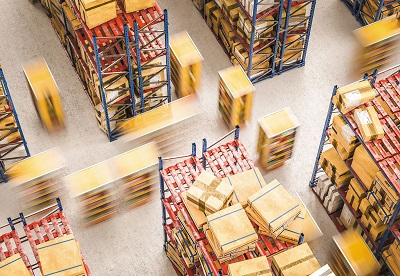
BY TOM GRESHAM
The turmoil of the COVID-19 pandemic has caused a kind of perfect storm in warehouse and distribution centers, skyrocketing the already growing demand for e-commerce to new heights while exacerbating the existing labor shortage and making it more difficult to meet that demand.
As a result of the pressures that have accompanied the pandemic, automation is seeing an accelerated incorporation at warehouses and distribution centers as more companies see the advantages of automation when demand heats up. Consequently, they also are navigating how to safely incorporate automation in the middle of a pandemic and to use it to improve overall safety in their operations.
“The increased lack of availability of workers combined with the increased demand for e-commerce and the increased demand for safe working environments have converged to really shine a bright light on the value of mobile robots,” said Jason Walker, CEO of MHI member Waypoint Robotics, in a June webinar hosted by AIA.
David Clear, chief revenue officer for MHI member Vecna Robotics, said the pandemic has highlighted the global interdependence of the supply chain and the value that automation can bring to the warehouse in a time of volatility.
“Disruption at one warehouse or distribution center can impact the rest of the downstream operations for everything from traditional retail stores to [buy online, pick-up in stores]models to consumer home delivery,” Clear said. “Autonomous mobile robots (AMRs) and orchestration solutions have proven to curb the impact of these challenges before they become larger issues by adapting to rapid fluctuations in real-time in an unpredictable industrial environment.”
Karen Leavitt, chief marketing officer for MHI member Locus Robotics, said in the AIA webinar that the increasing demand for e-commerce is the underlying force that is most driving interest in robotics. “It’s switched from being a demand to a need,” she said. Leavitt said the pandemic has been an accelerant to that need—“Business has shifted to the warehouse, so there’s tremendous demand to get orders straight out of the warehouse.”
Automation, such as AMRs, already offered advantages during surges in demand, but it’s never been more apparent than it is now, Leavitt said.
 MHI Solutions Improving Supply Chain Performance
MHI Solutions Improving Supply Chain Performance